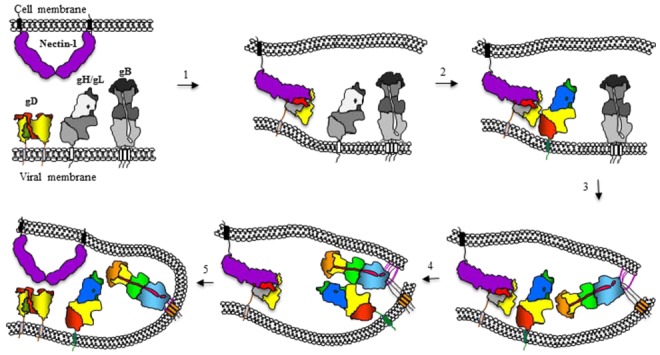Figure 5.

Cartoon representation of the sequential events leading to HSV entry. The entry process begins with the binding of gD to specific receptors (nectin-1 is shown), to gain entry into target cells (step 1). Receptor binding triggers displacement of the C-terminus of gD to expose a previously hidden region of gD, which we propose interacts with gH/gL (step 2). This interaction results in a conformational change in gH/gL that enables it to up-regulate gB into a fusogenic state. This three-step process may involve the interaction of gB with a cell surface protein, the insertion of gB fusion loops into the opposing lipid membrane (step 3) and an interaction between the ectodomains of gB and gH/gL (step 4). This converts gB from a pre- to a post-fusion state, resulting in fusion of the viral envelope with cell membranes and delivery of the nucleocapsid into the target cell (step 5). All essential proteins shown were drawn based on published structures with the corresponding domains. Where pre-activation structures were not available, the proteins are shown in gray.
